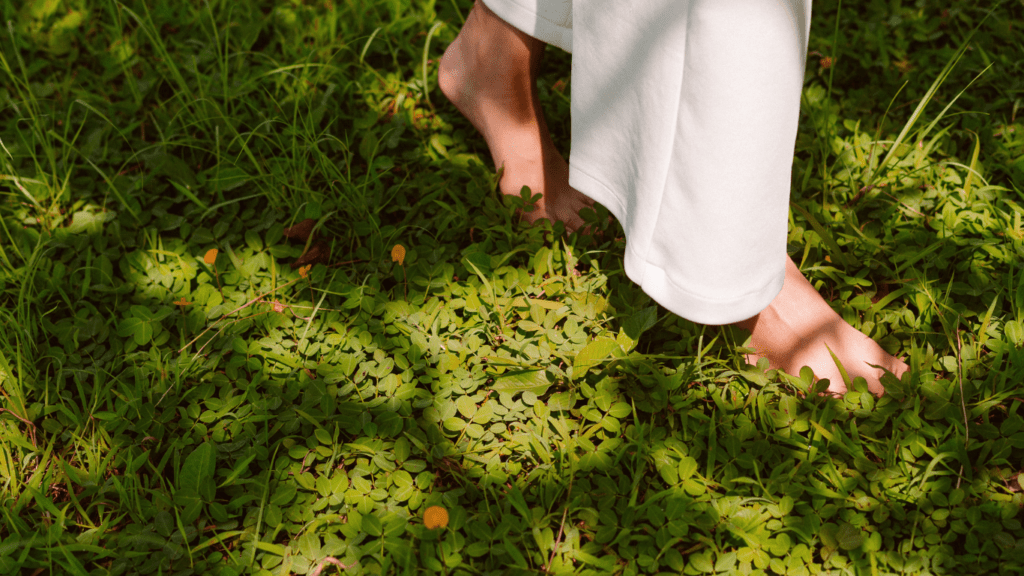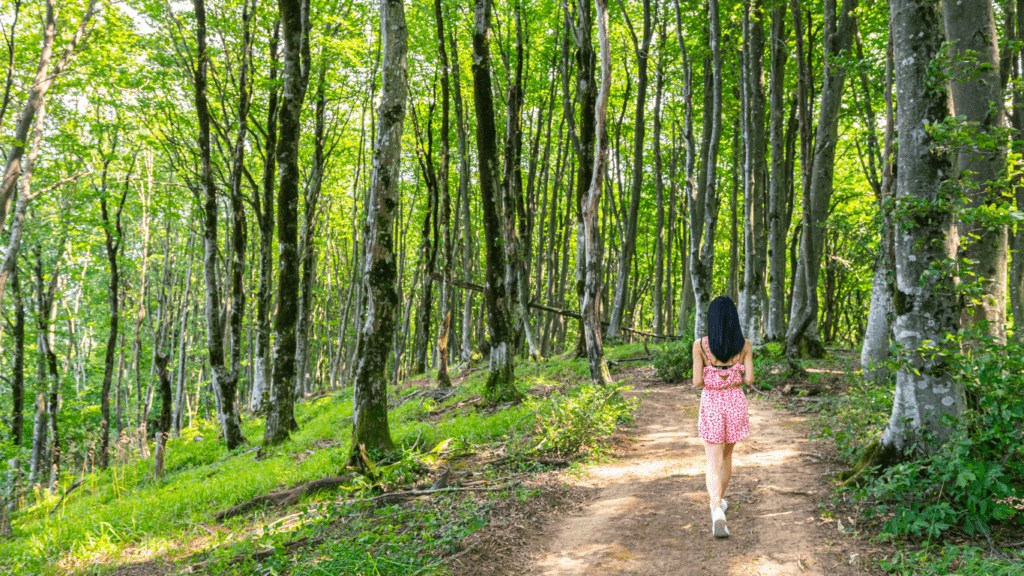The Psychological Advantages of Walking in Nature
Walking in nature offers several psychological benefits. This simple activity can significantly enhance mental health.
Reducing Stress Levels
Walking in nature reduces stress levels. Studies show that spending time in green spaces lowers cortisol, a hormone linked to stress. For example, a 2019 study published in “Frontiers in Psychology” found that a 20-minute walk in nature reduced cortisol by 10%. The natural environment distracts the mind from everyday worries, providing a mental break and calmness.
Enhancing Mood and Happiness
Nature walks enhance mood and happiness. Exposure to natural light and fresh air boosts serotonin, a neurotransmitter associated with well-being. In 2015, research from Stanford University found that participants who walked in natural settings experienced less rumination, a repetitive thought pattern linked to depression, compared to urban walkers. This makes walking in nature a simple yet effective way to improve mood.
Boosting Creativity
Walking in nature boosts creativity. The tranquil environment fosters divergent thinking, which is essential for problem-solving. A study by Stanford researchers in 2014 revealed that walking increased creative output by 60% compared to sitting. This effect is amplified in natural settings where stimuli are more varied and engaging.
Physical Health Benefits and Their Impact on Mental Health

Walking in nature provides significant physical health benefits that translate into improved mental health. By enhancing overall fitness and reducing risk factors for chronic diseases, nature walks promote a healthier mind.
Improved Physical Fitness
Regular walks in nature improve cardiovascular fitness and muscle strength. Engaging in physical activity increases endorphin levels, which can enhance mood. Moderate-intensity exercise such as brisk walking has been linked with improved physical and mental well-being. For example, a study in the Journal of Sport & Exercise Psychology found that individuals who engaged in regular walking reported better emotional well-being.
Lowering Blood Pressure
Walking in natural settings helps lower blood pressure. Studies from Japan suggest that spending time in forests, known as “forest bathing”, significantly reduces systolic and diastolic blood pressure. By decreasing blood pressure levels, the risk of heart disease lowers, which can reduce anxiety and improve overall mental health.
Encouraging Better Sleep
Walking in nature encourages better sleep patterns. Exposure to natural light during the day helps regulate circadian rhythms, leading to more restful sleep at night. Improved sleep quality alleviates symptoms of depression and anxiety. According to sleep experts, individuals who spend time outdoors often report falling asleep faster and experiencing deeper sleep. This leads to a stable mood and better cognitive function.
Social and Emotional Benefits
Walking in nature offers numerous social and emotional benefits. It’s not just about the physical activity; it’s also about connecting with others and oneself.
Enhancing Social Connections
Walking in nature provides opportunities to enhance social connections through shared experiences. By joining group walks or hiking clubs, individuals can meet new people with similar interests. For example, local park groups often organize weekend walks, bringing like-minded individuals together. These social interactions lead to stronger bonds over time, contributing positively to one’s mental health. Authoritative sources like the American Psychological Association note the importance of social connections in reducing feelings of loneliness and boosting overall well-being. Additionally, capturing these shared experiences through a slideshow video maker can help preserve memories, allowing participants to reflect on the connections they’ve made.
Fostering a Sense of Community
Natural settings foster a sense of community by bringing people together in shared spaces. Communities often host outdoor events like nature walks and cleanup drives in parks and greenbelts. Participating in such activities helps individuals feel a part of their community, creating a sense of belonging and shared purpose. For instance, neighborhood associations might organize monthly nature walks, encouraging residents to engage and connect. The sense of community developed through these activities significantly impacts emotional health, promoting feelings of security and support.
Building Emotional Resilience
- Regular walks in nature help build emotional resilience by offering a tranquil environment for reflection and mindfulness.
- Engaging in mindful walking practices, where one focuses on the present moment and natural surroundings, reduces stress and anxiety.
- Studies reveal that spending time in nature helps individuals cope better with life’s challenges.
- Participating in forest therapy sessions helps individuals develop coping mechanisms for stress management.
- Over time, this practice strengthens emotional resilience, enabling better handling of future stressors and emotional upheavals.
How to Incorporate Nature Walks into Your Routine
Incorporating nature walks into one’s routine can transform mental health positively. Here’s how to make it practical and enjoyable.
Finding Local Trails and Parks
Identifying nearby green spaces makes it easier to incorporate nature walks. Start with:
- public parks
- nature reserves
- local trails
Websites like AllTrails and apps like Google Maps help locate scenic routes nearby. An example is the local botanical garden that offers well-maintained paths. Joining local hiking groups on social media can provide valuable insights and recommendations.
Making Time in a Busy Schedule
Scheduling regular nature walks ensures consistency. Early morning or late afternoon walks could fit well into a busy schedule. Utilizing lunch breaks or weekends for short walks maximizes time. For instance, a 20-minute walk in a nearby park during lunch offers a refreshing break. Setting reminders and planning walks as one would plan meetings can maintain regularity.
Tips for Enjoying Nature Walks Year-Round
Different seasons require different preparations. Wear layers in colder months and breathable fabrics in summer. Carry water to stay hydrated, and use sunscreen to protect from UV rays. In rainy seasons, waterproof shoes and jackets become essential. For instance, using a lightweight raincoat in the spring ensures comfort. Exploring seasonal beauty, like autumn foliage or spring blossoms, keeps walks engaging.
By integrating these strategies, nature walks can become a seamless part of daily life, significantly enhancing mental well-being.



 Mindfulness & Nature Wellness Specialist
Eve Macleod is a certified mindfulness and meditation instructor who has spent years cultivating her passion for connecting wellness practices with the natural world. At Whisper Forest Ways, Eve focuses on guiding readers through techniques that harness the power of nature to promote mental, emotional, and physical well-being. Specializing in forest bathing, nature-based meditation, and eco-therapy, Eve helps readers discover how nature can enhance mindfulness practices and deepen relaxation. She believes that the natural world holds untapped potential for personal healing, stress relief, and spiritual growth, and through her articles and tutorials, she invites everyone to embark on a journey toward a more peaceful and centered life.
Mindfulness & Nature Wellness Specialist
Eve Macleod is a certified mindfulness and meditation instructor who has spent years cultivating her passion for connecting wellness practices with the natural world. At Whisper Forest Ways, Eve focuses on guiding readers through techniques that harness the power of nature to promote mental, emotional, and physical well-being. Specializing in forest bathing, nature-based meditation, and eco-therapy, Eve helps readers discover how nature can enhance mindfulness practices and deepen relaxation. She believes that the natural world holds untapped potential for personal healing, stress relief, and spiritual growth, and through her articles and tutorials, she invites everyone to embark on a journey toward a more peaceful and centered life.
